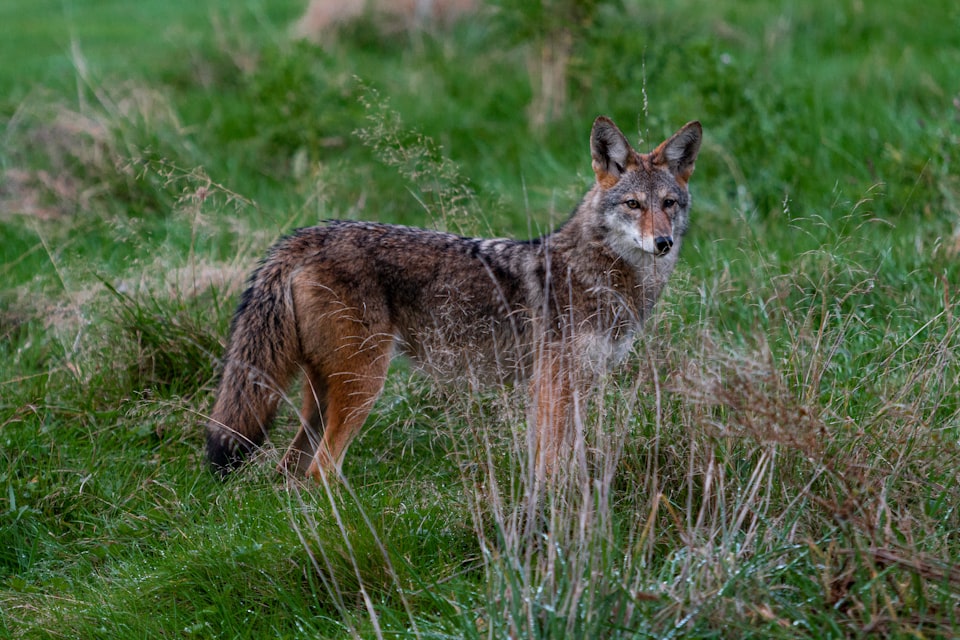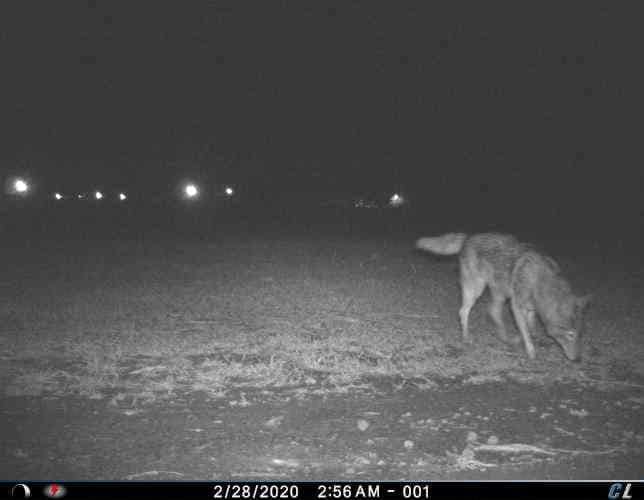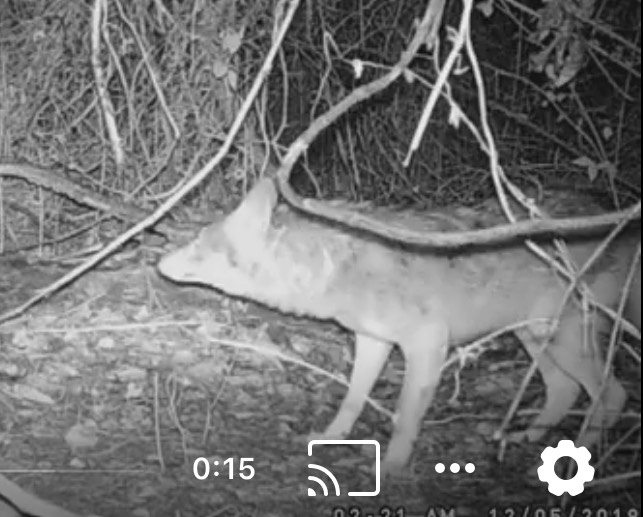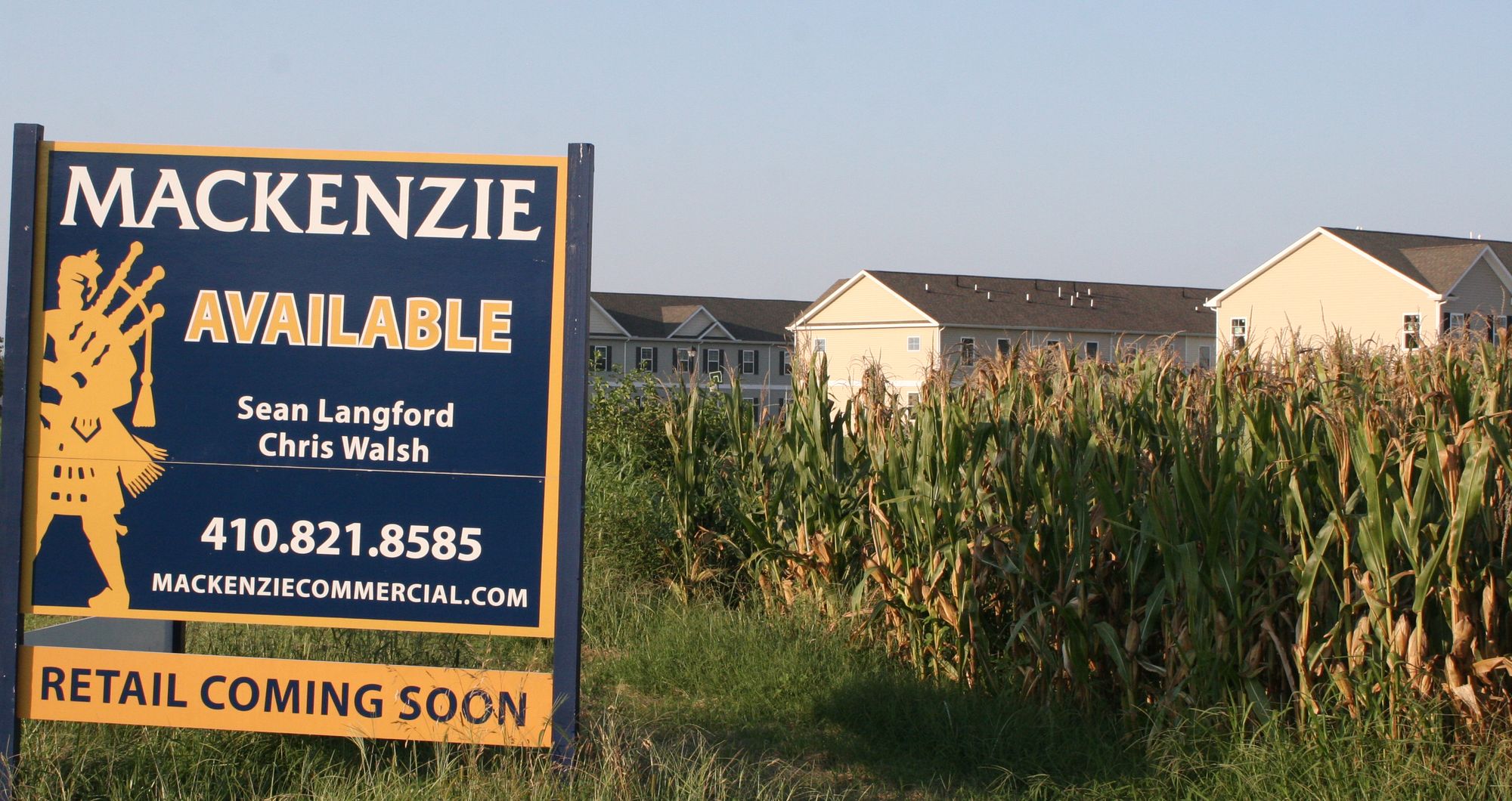Like it or not, coyotes are probably here to stay in Delaware

Large predators — black bears, cougars and wolves — long ago disappeared from Delaware, unless you count the occasional harassed bear that accidentally wanders over from Pennsylvania and discovers that it’s now a media sensation.
Until recent decades, the state’s largest wild predators were foxes, but now their larger cousins the coyotes have moved in. They aren't common yet, but they're well established. You may not have seen them or heard them howling at night, but chances are many Delawareans who don’t know they’re around share a neighborhood with one.
One Milton resident discovered that recently, posting on the social media platform Nextdoor that her husband was walking dogs at night in the middle of their development and saw a coyote standing in a neighbor’s driveway. Her post was met with skepticism and surprise from some residents who didn’t think there were coyotes around.
These dog sized creatures that look a bit like a mini-wolf can spark a range of reactions, but often it’s alarm or hatred. Pet owners fear for their cats and dogs, hunters resent the competition for game animals, and farmers worry about their livestock.
Others defend the creature. Coyotes are communal animals with strong family ties that help control rodent populations, and they have spread far and wide with the help of humans who cleared land and wiped out competing predators, Illinois naturalist Carla Rich Montez notes in an essay for the U.S. Fish and Wildlife Service.
While Delaware once had wolves, coyotes aren’t native to the state. Biologist Rob Hossler, wildlife section administrator for the Delaware Department of Natural Resources and Environmental Control, said coyotes originated in the Great Plains and have spread eastward across Ohio and Pennsylvania, and also across the top of the Great Lakes into New England. The assumption is that Delaware’s coyotes came in from Pennsylvania.
The first confirmed coyote sighting in Delaware came in 1994, he said, in the Prime Hook area, and a number of reports followed in the northern part of the state, where coyotes are still frequently sighted. Officials don’t know exactly how many are in the state, but a ballpark guess is around 200 – not all that many.
"The fact that a coyote is such a rare event still that we get calls about it is another indicator that they're not that common," Hossler said.
The first hunting season for coyotes in the state was in 2014; today it runs from Sept. 1 to Feb. 28, and there’s no limit on how many hunters can shoot. People are also allowed to kill them year-round if they pose a threat to humans, pets or livestock.
Although many people might like to get rid of the animals, Hossler said the state isn’t trying to do that. They’re now in 49 of the 50 states, he pointed out.
“There’s been many states that have tried to eradicate coyotes with everything from aircraft to cyanide,” Hossler said. “The bottom line is coyotes will determine how many coyotes there are going to be.”
If you look at a map of coyotes’ historic range and how that’s changed over the years, you'd think people have been breeding them instead of killing them. They’ve spread from their western origins in all directions like a conquering army, marching through the U.S., north from Canada into Alaska, and further south in Mexico. And they’ve adapted along the way: Hossler said eastern coyotes are 15 pounds larger than the average specimen you’d see in Oklahoma, perhaps because they’ve had to hunt in deep snow up north.
How are coyotes so incredibly resilient? They can adapt their litter sizes depending on food available and how many other coyotes are around, according to the Urban Coyote Research Project. Some theorize that this is why eradication efforts fail, as coyotes simply have more pups when their numbers fall. One 2017 study suggests it isn’t quite that straightforward, but that young coyotes looking for new territory move in to fill the void as the population drops.
Sign up to support the work of The Delaware Independent
Hunters are not fans
While the growing coyote population can often keep hidden from people who don't spend a lot of time outdoors, Delaware’s deer hunters have frequently seen them and many of them are not enthusiastic about the new predator in town. A post in a local deer hunters’ Facebook group garnered hundreds of comments, from accounts of sightings to photos of coyotes taken by automatic trail cameras to opinions about the animals’ impact on wildlife. The majority consensus seemed to be that coyotes will harm the population of deer, turkey and other animals, and that shooting as many as possible is the best policy.
One of the hunters, Jacob Coburn, who lives in northern Delaware, said he’s seen them all over the place via cameras, and has shot one that weighed about 30-35 pounds. He moved to Delaware from Maine, where coyotes are plentiful, so he knew that what he was looking at was no fox.
“If there’s one, there’s 100 now,” he said. But he was resigned about getting rid of them. “There’s no stopping them at this point.”
He criticized Delaware’s coyote hunting rules, which limit what guns can be used at certain times, and set a defined season. “It’s almost like they want them here, but I don’t think they realize what they’re getting into,” he said.
Jeff Story, from Long Neck on the other end of the state, said he first shot a coyote 13 years ago off Wolfe Neck Road in Rehoboth, after watching it kill a young deer. Story is definitely not on Team Coyote. “They wreck havoc on everything,” he said.

Hossler, the DNREC biologist, said other groups were unhappy when the state instituted the coyote season years ago, questioning the need for it.
He doesn’t think hunters have much to worry about, saying the last two hunting seasons have seen a record deer harvest. Coyotes do kill some fawns, or injured adult deer, but the state doesn’t see coyotes as a means to control the deer population. One reason for that is that deer in this region have their fawns in a small window of time, which means coyotes have less time to discover them and prey on them.
One thing that can wipe out deer is epizootic hemorrhagic disease, Hossler said, and that has hit some areas of the state in recent years, including in northern Delaware where hunters might blame coyotes for the sudden disappearance of game.
“We haven’t shown that the coyote predation is a factor in the deer population in Delaware at all,” he said.
Hossler belittled the rumor that DNREC secretly introduced coyotes intentionally to control deer numbers. It's a common story in other states, too, he said. “Quite frankly, agencies wouldn’t want to do that … and that’s not how agencies work. It amazes me that that rumor still persists.”
As far as wild turkeys, in a later followup via email Hossler said the state has found that red foxes are significant nest and hen predators, and there’s no reason to believe coyotes wouldn’t do the same thing. At the same time, coyotes are significant predators of foxes, too, so their impact on turkeys might not change much overall. He said predation is a factor in the turkey population, but they don’t think it’s limiting the numbers as a whole.
Coyotes in suburbia
Although the assumption might be that packs of howling coyotes might feel more at home in the rural, spread out southern part of the state, Hossler said most coyotes are killed in New Castle County, which has large wooded tracts even though those tracts often have developments in them.
That can lead to run-ins. Coyotes are known to eat both pets and pet food. “Coyotes are about as opportunistic predators as you’re going to find, that's why they do so well,” Hossler said.
They also will eventually bump into humans in suburban areas, as the recent Milton sighting indicates. Coyotes can become a nuisance especially when people begin to feed them or otherwise let them get accustomed to human interaction, according to the Urban Coyote Research Project, a yearslong study in the Chicago area. Coyotes have already made themselves at home in many urban areas in the country.
Chuck Forrest, of Newark, said he was trapped during a run-in with a coyote in 2019 and ended up calling 911. He was fishing on Sunset Lake, not far from Glasgow High School, and left right around dusk, he said. On his way back, a coyote came at him “full blast,” showing its teeth. He ended up scrambling up a nearby fence and using his fishing rods to fend off the animal, he said. Finally, seeing no escape, he used his phone to call for help. “I was a little bit embarrassed to call the cops and say ‘I got a coyote attacking me,’” he said. Forrest’s theory is that it was a mother coyote with pups nearby and it was defending its young.
He likes animals, he said, but he’d like to see fewer coyotes around and is worried there could be more run-ins.

Hossler said he had spoken to Forrest about that incident, but said they haven’t had any other reports of aggressive coyotes in that area and that on the whole, it’s unusual for coyotes to be aggressive toward people.
In general, he recommended that people keep a close eye on their pets if there is a coyote in the area, and bring in pet food so that doesn’t lure them in. Even if a pet escapes being eaten by coyotes, it can pick up parasites and diseases from them.
You should also not try to make friends with coyotes or tame them. Coyotes are wild animals, and researchers recommend keeping them that way, making sure coyotes keep their fear of humans by shouting, waving or clapping hands or throwing objects at them in a situation where a coyote is acting aggressively. “This should be done within reason so as not to create conflicts that might not otherwise occur by injuring or cornering a coyote that simply wants to escape. If a coyote is not causing conflict, you should not initiate hazing efforts,” the Coyote Urban Research Project’s website notes.
You should also expect to see them around, as they’re probably here to stay. “They’re just a very adaptive critter,” Hossler said.
You can find out more about coyotes in Delaware and learn tips for interacting with them on the DNREC website.
More stories:


